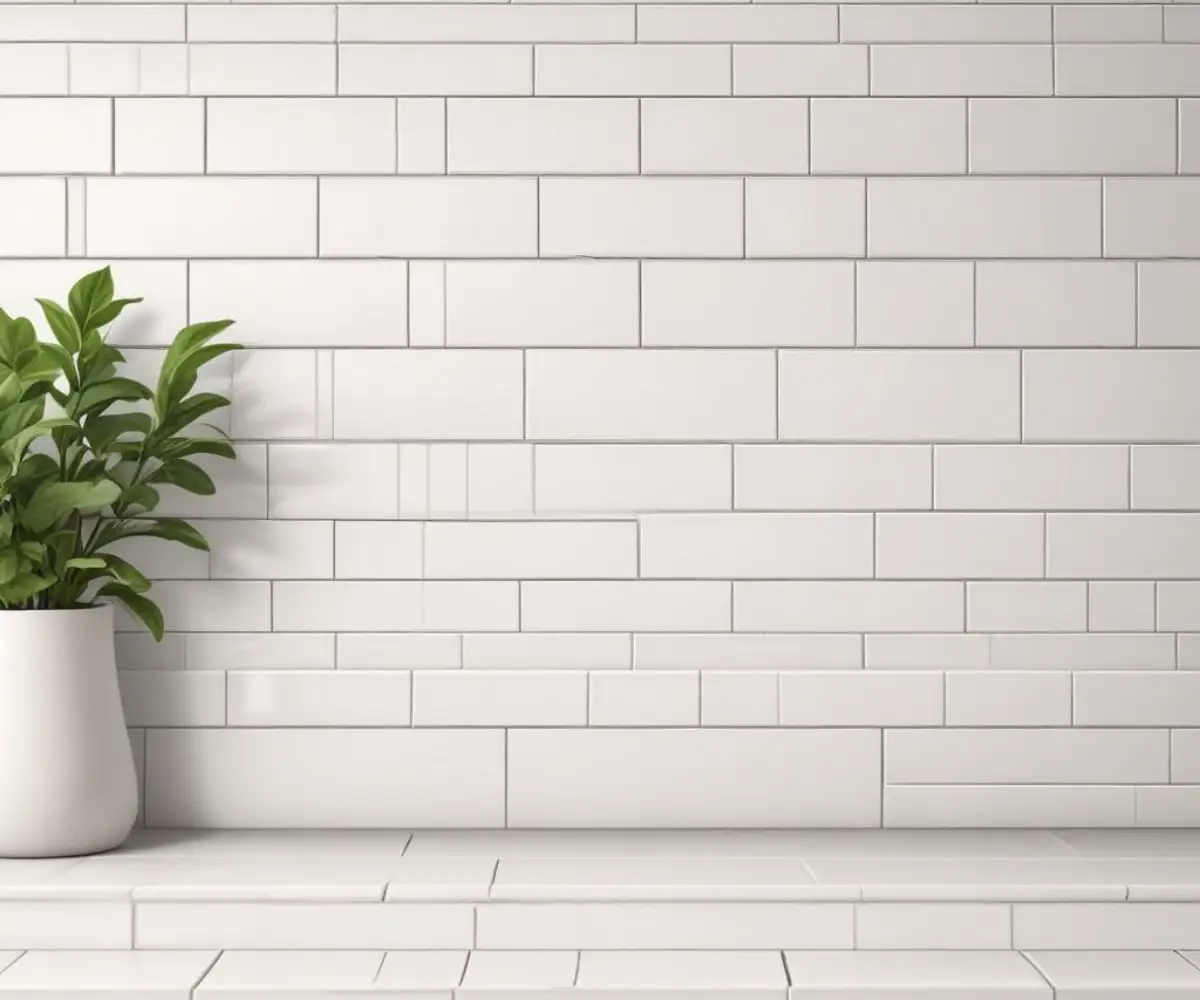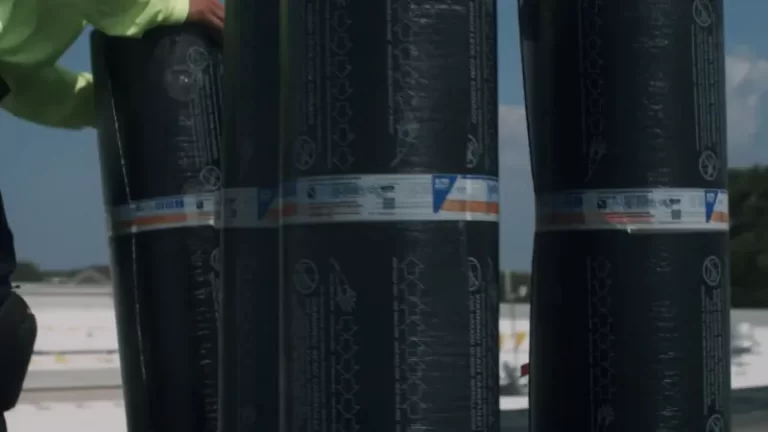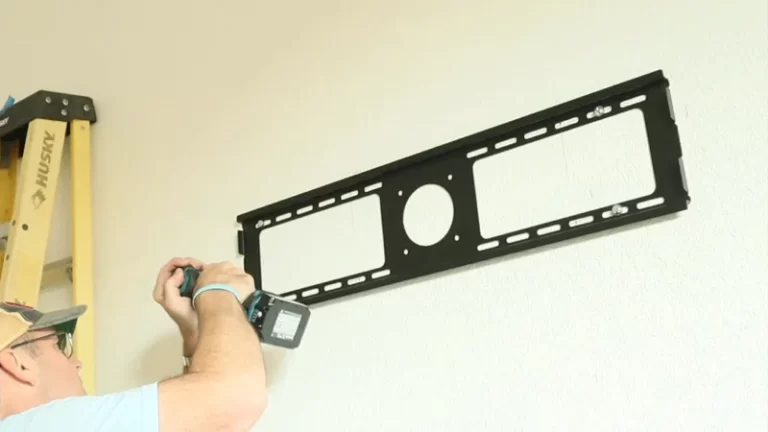Tile to Shiplap Transition: Your Guide to a Flawless Finish
Combining the classic, clean lines of tile with the rustic charm of shiplap is a popular design choice. However, the point where these two materials meet can create a visual hiccup if not handled correctly. A poorly executed tile to shiplap transition can look unprofessional and detract from the beauty of both surfaces.
This common design challenge leaves many homeowners wondering how to create a seamless and intentional look. The solution lies in careful planning and choosing the right technique for a clean, professional-grade finish. This guide will walk you through the entire process.
You'll Learn About
Why This Transition Demands Careful Planning
Creating a clean line between tile and shiplap isn’t just about aesthetics; it’s about accommodating the fundamental differences between the materials. Wood and ceramic or porcelain behave very differently, and understanding these differences is the first step to a successful transition. Ignoring them can lead to cracks, gaps, and a finish that fails over time.
One of the most significant factors is material movement. Wood, including shiplap, naturally expands and contracts with changes in humidity and temperature. Tile, on the other hand, is rigid and stable, with nearly all movement occurring in the substrate behind it.
Understanding Material Thickness and Substrates
Another critical consideration is the difference in thickness. A standard tile installation, including adhesive and a backer board, is often thicker than a typical shiplap plank. Simply butting these two materials together without a plan will result in an unsightly lip that collects dust and looks unfinished.
A solid foundation is crucial for both materials. The wall structure must be sound and flat before either tile or shiplap is installed. When preparing your walls, understanding the difference between materials like plywood vs sheathing is vital for ensuring you have the right backing for your project’s needs.
The Crucial First Decision: Tile or Shiplap First?
Before you begin installation, you must decide which material to install first. This choice will significantly impact your workflow and the final appearance of the transition line. Each approach has distinct advantages and disadvantages.
Installing the tile first is often the recommended method for achieving the cleanest possible line. This allows you to create a perfectly straight, finished tile edge that the shiplap can then be installed against. This method hides the cut edge of the shiplap, which is generally easier to cut precisely than tile.
Pros and Cons of Installation Order
If you choose to install shiplap first, you must protect it carefully from the water and mess of the tile installation process. The primary benefit of this order is that the tile adhesive and grout can help seal the bottom edge of the shiplap. However, achieving a perfectly straight grout line against the wood can be challenging for even experienced DIYers.
Ultimately, for most projects, installing the tile first provides greater control and a more predictable, professional-looking outcome. It allows you to focus on creating one perfect, hard edge to work against.
Four Proven Methods for a Perfect Transition
Once you’ve planned your installation order and accounted for thickness differences, it’s time to choose your transition method. There are several effective techniques, ranging from minimalist to more decorative approaches. The best choice depends on your design style, budget, and DIY comfort level.
Each method offers a different aesthetic and level of difficulty. Considering these options carefully before you start will ensure you have the necessary materials and tools on hand. Let’s explore the four most common and effective solutions.

Method 1: The Minimalist Caulk Line
For a truly seamless look where the materials are perfectly flush, a simple bead of high-quality caulk can be the perfect solution. This method works best when the tile and shiplap are installed on the same plane with no difference in depth. It creates a clean, subtle line that doesn’t draw attention.
The key to success with this method is using the right product. A flexible, paintable, siliconized acrylic caulk is essential to accommodate the natural expansion and contraction of the shiplap. In wet areas like bathrooms, opt for a 100% silicone caulk that offers mold and mildew resistance.
Method 2: Classic Wood Trim
Using a piece of wood trim is the most traditional and versatile way to handle a tile to shiplap transition. Trim can gracefully conceal any differences in thickness and cover minor imperfections in the cut edges of both materials. This method offers a wide range of stylistic possibilities.
Common trim profiles used for this purpose include quarter-round, shoe molding, or simple flat stock for a more modern look. For best results, always paint or stain your trim piece before installation. This ensures a cleaner finish and prevents you from getting paint on your tile and grout.
Method 3: The Modern Metal Edge
For a contemporary or transitional aesthetic, a metal edge trim, often called a Schluter strip, offers a sleek and clean transition. This L-shaped or rounded profile is installed at the same time as the tile, with the anchoring leg embedded in the tile adhesive. The result is a crisp, defined line between the tile and the shiplap.
Metal edge trims come in various finishes, including brushed nickel, chrome, brass, and black, allowing you to match your fixtures and other hardware. This method requires precise planning, as the trim becomes a permanent part of the tile installation. It is an excellent way to protect the edge of the tile from chipping.
Method 4: The Architectural Reveal
A reveal, or shadow gap, is an advanced technique that creates a small, intentional recess between the tile and the shiplap. This method adds depth and a high-end, architectural feel to the transition. It works by terminating both materials cleanly and leaving a purposeful gap, often painted black to enhance the shadow effect.
This approach requires meticulous planning and execution. Both the tile and the shiplap must have perfectly finished edges, as they will be visible. The reveal itself is typically created using a specialty trim piece or by carefully spacing the materials during installation.
Comparing Transition Methods
Choosing the right method for your project is crucial. The following table breaks down the key characteristics of each technique to help you decide which is the best fit for your skill level, budget, and desired aesthetic.
| Transition Method | Best For | Skill Level | Cost | Aesthetic |
|---|---|---|---|---|
| Caulk Line | Perfectly flush surfaces, minimalist design | Beginner | Low | Seamless, modern |
| Wood Trim | Uneven thicknesses, concealing gaps | Beginner | Low-Medium | Traditional, farmhouse, versatile |
| Metal Edge | Modern and contemporary designs, protecting tile edge | Intermediate | Medium | Sleek, clean, modern |
| Architectural Reveal | High-end custom look, creating depth | Advanced | Medium-High | Architectural, sophisticated |
Step-by-Step: Installing a Trim Transition
Using a wood trim piece is the most common and forgiving method for a DIY project. Follow these steps for a professional-looking finish that effectively bridges the gap between your tile and shiplap.
This process assumes you have already installed your tile and shiplap and are ready to cover the seam. Remember to take your time with measurements and cuts for the best results.
1. Select and Prepare Your Trim
Choose a trim profile that complements your design. A simple 1×2 flat stock often works well for a clean, modern farmhouse look. Measure the length of the transition area and cut the trim to size using a miter saw for clean, angled cuts at corners.
As mentioned earlier, it is highly recommended to paint or stain the trim piece before you nail it to the wall. This is far easier than trying to paint a thin piece of wood neatly once it’s in place. Apply at least two coats for a durable finish.
2. Secure the Trim
Position the prepared trim piece over the seam between the tile and shiplap. Use a brad nailer with 1.5-inch nails to secure it. Drive nails every 12-16 inches, ensuring they penetrate into the wall studs or solid backing for a secure hold.
If you don’t have a nailer, you can use finish nails and a hammer. Be sure to use a nail set to sink the heads slightly below the wood surface to prepare for filling.
3. Fill and Caulk for a Seamless Look
Use a small amount of wood filler to cover each nail hole. Once the filler is dry, lightly sand it smooth with fine-grit sandpaper. This step is essential for making the fasteners disappear.
Finally, apply a thin bead of paintable caulk along the top edge of the trim where it meets the shiplap and along the bottom edge where it meets the tile. This seals all gaps and creates a truly built-in, seamless appearance. Smooth the caulk bead with a damp finger or a caulk tool before it skins over.
Special Considerations for Bathrooms and Kitchens
When creating a tile to shiplap transition in a high-moisture environment like a bathroom or kitchen backsplash, waterproofing is paramount. Water intrusion can lead to mold, rot, and significant damage to your walls. The materials you choose and how you seal them are critical.
For these areas, consider using PVC shiplap and trim, which are completely waterproof and will not swell or warp with moisture exposure. If you use real wood, ensure it is properly sealed on all sides with a high-quality, moisture-resistant primer and paint. The durability of your substrate is also key; a poor shiplap subfloor or wall backing can lead to issues down the line.
The Importance of Proper Sealing
The transition seam itself is a potential weak point for water entry. In wet areas, you must use 100% silicone caulk at the joint between the tile and the shiplap or trim piece. Silicone provides a flexible, waterproof seal that is essential for protecting the wall assembly.
During a bathroom remodel, plumbing work is often part of the project. If you’re updating fixtures, you might encounter different types of pipes. Knowing how to handle specific connections, such as whether you can you use sharkbite on soft copper, can be crucial for a leak-free renovation.
Common Mistakes to Avoid
A successful transition is often about avoiding common pitfalls. Being aware of these potential mistakes can save you time, frustration, and the cost of rework. Pay close attention to the details to ensure a lasting and beautiful result.
From product selection to installation order, small errors can have a big impact on the final look. Here are some of the most frequent mistakes homeowners make when tackling this project.
Ignoring Thickness Differences from the Start
One of the most common errors is failing to plan for the difference in material depth. Waiting until both surfaces are installed to figure out how to bridge a significant lip will limit your options and likely result in a bulky, awkward transition. Plan ahead by either building up the wall behind the shiplap or choosing a transition method specifically designed to handle the difference.
Never use excessive amounts of caulk to ramp between two different depths. This will look unprofessional and is likely to crack and fail over time. A dedicated trim piece is the proper solution for this common issue.
Using the Wrong Type of Caulk
Using standard painter’s caulk (acrylic latex) in a wet area or for a joint that requires flexibility is a recipe for failure. It will crack as the wood moves and will quickly grow mildew in a damp environment. Always choose the right caulk for the job: flexible, siliconized acrylic for dry areas and 100% silicone for bathrooms and kitchens.
This simple material choice is one of the most important factors in the longevity and durability of your transition. Taking the time to read the product label can save you from having to redo the work in a year.
A Seamless Finish is in the Details
Creating a beautiful transition between tile and shiplap is entirely achievable with careful planning and attention to detail. By understanding the unique properties of each material and choosing the right method for your specific project, you can achieve a professional finish that elevates your entire space.
Whether you opt for a minimalist caulk line, a classic wood trim, or a modern metal edge, the key is to plan your steps from the very beginning. From the installation order to the final bead of caulk, every detail contributes to a clean, intentional, and durable result that seamlessly blends two distinct and stylish materials.


